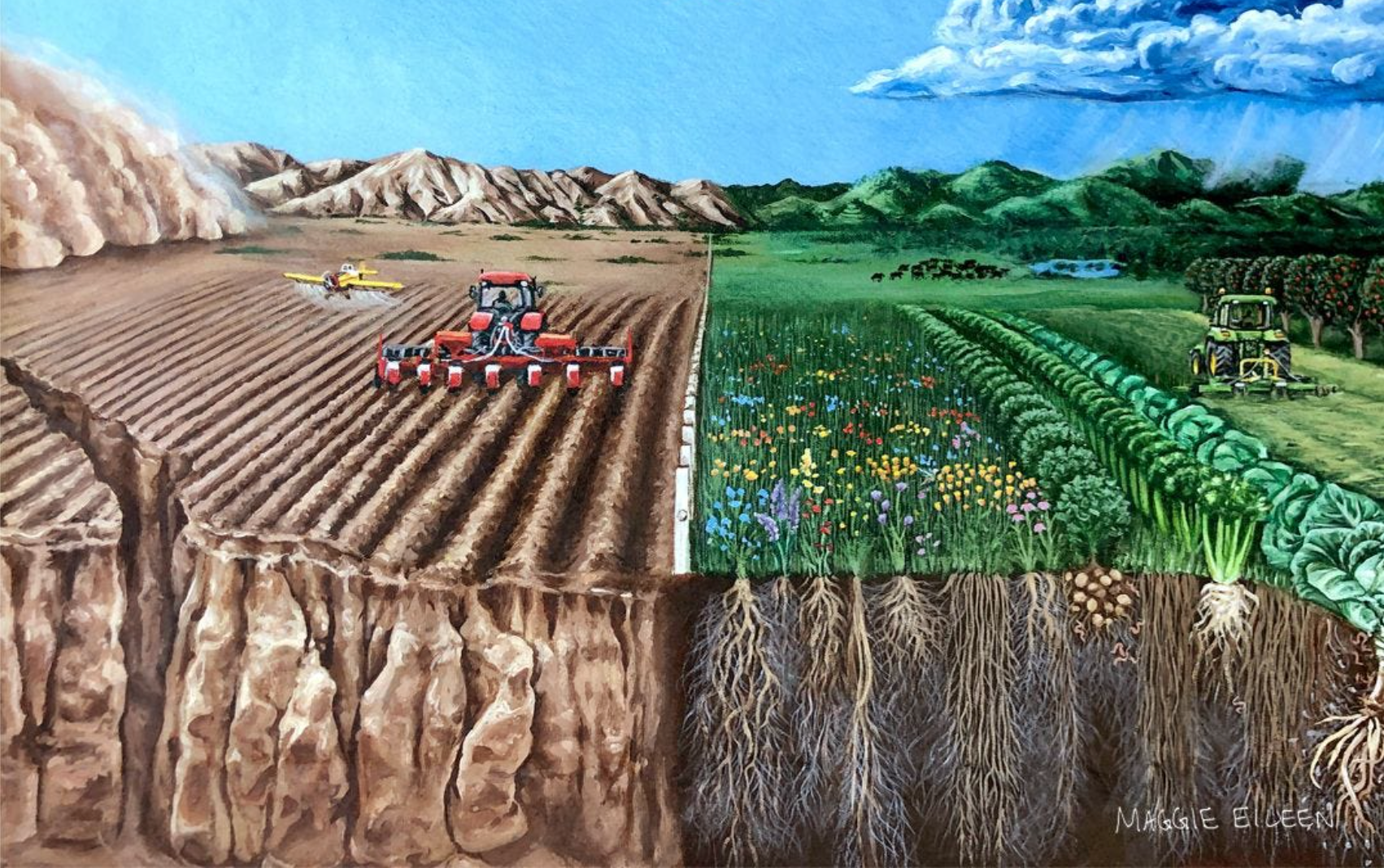Regenerative Farming vs. Conventional Farming: A Sustainable Revolution
Posted on September 22 2023,
In recent years, the world has witnessed a growing interest in sustainable agriculture, driven by concerns over climate change, soil degradation, and the environmental impact of conventional farming practices. One emerging solution that has gained significant attention is regenerative farming. In this blog post, we'll explore the key differences between regenerative farming and conventional farming, highlighting the potential benefits of transitioning to regenerative practices.
Philosophy and Goals
- Conventional farming primarily focuses on maximizing crop yields through practices like monoculture, heavy chemical use, and extensive tilling. The goal is often centered on short-term productivity and profit.
- Regenerative farming takes a holistic approach, aiming to restore and enhance the health of the ecosystem. It emphasizes long-term sustainability, soil health, biodiversity, and carbon sequestration as key objectives.
Soil Health
- Conventional agriculture often leads to soil degradation due to the heavy use of synthetic fertilizers, pesticides, and frequent plowing. This can result in soil erosion, loss of organic matter, and decreased soil fertility over time.
- Regenerative practices prioritize soil health. Farmers focus on minimal disturbance of the soil (no-till or reduced tillage), cover cropping, and crop rotation to improve soil structure, water retention, and nutrient cycling. Healthy soil is the foundation of regenerative farming.
Biodiversity
- Monoculture is a common practice in conventional farming, where a single crop is grown over vast areas. This limits biodiversity and can lead to increased vulnerability to pests and diseases.
- Regenerative farmers encourage biodiversity by planting a variety of crops and incorporating native plants. This attracts beneficial insects, improves pollination, and enhances the overall resilience of the ecosystem.
Chemical Use
- Conventional farming relies heavily on synthetic chemicals, such as pesticides and herbicides, to control pests and weeds. This can lead to chemical runoff, harming nearby ecosystems and water sources.
- Regenerative farming minimizes chemical use and employs natural methods for pest and weed control. Integrated pest management, companion planting, and crop rotation are among the strategies used to reduce chemical dependency.
Carbon Sequestration
- Conventional farming contributes to greenhouse gas emissions through the use of fossil fuels, and the degradation of soil can release stored carbon into the atmosphere.
- Regenerative practices actively sequester carbon from the atmosphere into the soil, mitigating climate change. Healthy soils store carbon in the form of organic matter, making regenerative farming a powerful tool in the fight against global warming.
Regenerative farming represents a paradigm shift in agriculture, focusing on sustainability, soil health, and ecosystem restoration. While conventional farming has been the dominant method for decades, the detrimental environmental impacts it generates have prompted a reevaluation of our agricultural practices. It offers a promising alternative, with benefits for the environment, food security, and the long-term viability of our planet. As consumers and policymakers become increasingly aware of these advantages, the transition to regenerative agriculture may play a pivotal role in shaping the future of farming.
Kiss The Ground movie is a wonderful documentary on regenerative vs. conventional farming.
Farmer's Footprint is another great resource to learn more.
Angelic Organics is a great Chicagoland CSA, and our 1 Percent For The Planet partner.



0 comments